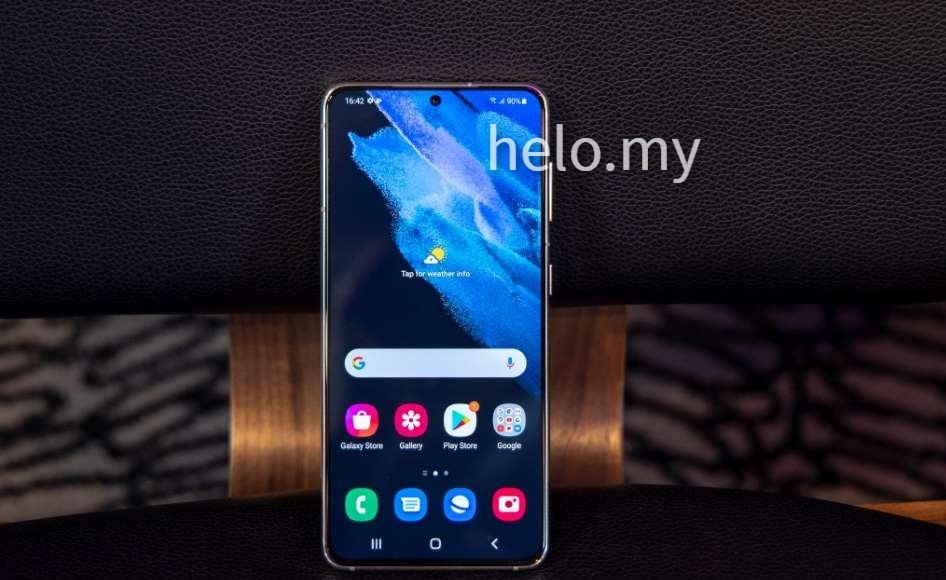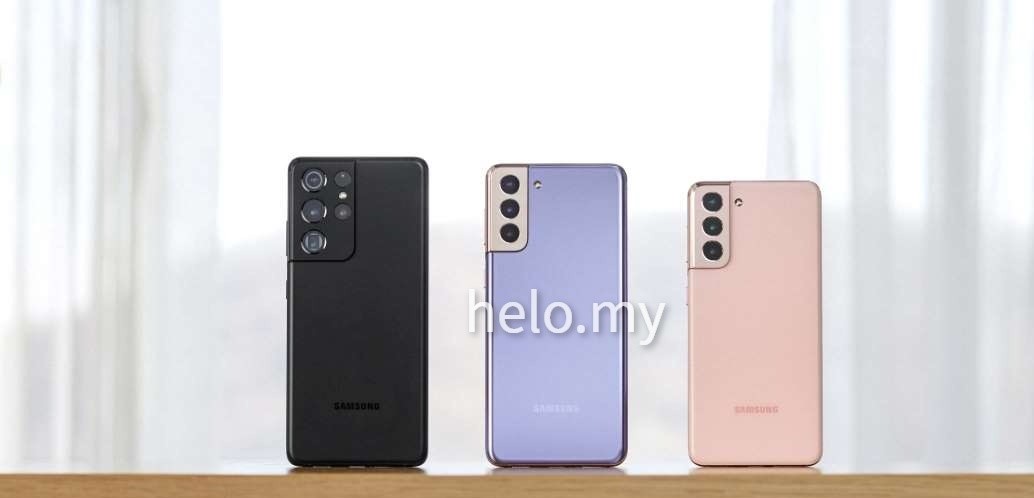[ PROMO ] Get additional Samsung ANC Type-C Earphones (worth RM299) for free when you pre-order the Galaxy S21 series with the promo code SCS21VIP via the Samsung online store.
Advertise for FREE*
Business listings, Events, Classifieds, Deals
www.helo.my/advertise
helo.my: At the Galaxy Unpacked 2021 event yesterday, Samsung announced some really interesting products, including the Galaxy Buds Pro and the Galaxy SmartTag. But the spotlight was on the headlining act of the launch: the Samsung Galaxy S21 series. Just like its predecessor, the series is made up of three models: the Galaxy S21, S21+, and the range-topping Galaxy S21 Ultra.
At the launch, Samsung showed off a bunch of new features for the company’s latest flagship smartphone series, and the Galaxy S21 series is probably one of the best Android phones available right now—on paper. However, the question I had during launch was—is this worth an upgrade if you already have a Galaxy S20 smartphone?
Here’s a quick breakdown of the upgrades (and a couple of downgrades) that the Galaxy S21 series offers.

1. More RAM and storage in Malaysia
When the Galaxy S20 was launched back in 2020, Samsung Malaysia made the rather odd move of releasing all three models with a single storage option of 128GB. Imagine that—buying a brand new 5G smartphone for just under RM5,000, and being limited to 128GB of storage.
They’ve improved on this with the Galaxy S21 series, however. Now, you get a minimum storage of 256GB on the Galaxy S21 Ultra (up to 512GB), while the Galaxy S21 and S21+ come with single storage options of 256GB.
Meanwhile, the range-topping Galaxy S21 Ultra now comes with a 16GB RAM option—a significant improvement over the 12GB of RAM that came with the Galaxy S20 Ultra. As for the Galaxy S21 and S21+, you’re getting 8GB of RAM.
2. Updated cameras and Laser AF on the Galaxy S21 Ultra

Traditionally, the cameras are among the most eye-catching things about the Galaxy S-series. When the Galaxy S20 Ultra was announced, the headlining camera feature was the 108MP main sensor—along with 100x Space Zoom, of course. The S21 Ultra, meanwhile, has a similar 108MP main camera (and Space Zoom), but Samsung has ditched the 48MP telephoto lens on the S20 Ultra for a pair of 10MP telephoto lenses on the Galaxy S21 Ultra.
Meanwhile, Samsung has addressed complaints over the Galaxy S20 Ultra’s auto-focusing by replacing the VGA ToF sensor with a Laser AF sensor on the Galaxy S21 Ultra—just like the Galaxy Note 20 Ultra.
3. S Pen support… but only on the Ultra
The S Pen is a mythical, iconic stylus—okay, maybe not. But there’s no denying the impact that the S Pen has had on Samsung’s Note series, and they’ve finally heeded calls (after years) to introduce stylus support on other flagship smartphones.

And of course, the Galaxy S21 Ultra is the first ever non-Note Galaxy smartphone to come with support for the S Pen. You will have to purchase the stylus separately, and there isn’t a dedicated silo on the S21 Ultra, so you might have to get used to using a case instead.
It’s worth noting that if you’re looking for the full S Pen experience, it might be better to pick up the Galaxy Note 20 Ultra instead—with Air Gestures among the benefits. There will be an enhanced version of the S Pen called the S Pen Pro, but that’s only expected to be released later.
4. The Exynos 2100
The Exynos 2100 powers the Galaxy S21 range in Malaysia (sorry, guys), but Samsung promises that their newest chip offers a improved performance due to a switch from a 7nm to 5nm EUV. This supposedly offers a 10 percent increase in power, and a 20 percent reduction in power consumption, and the Korean company promises a CPU that is 30 percent faster, along with a 40 percent boost in graphics performance over its predecessor.
Of course, it’s worth noting that the Galaxy S21 series will be powered by the Snapdragon 888 in other regions. Between the two, both chipsets are based on a 5nm process, with an ARM Cortex-X1 core on the CPU; on the Exynos 2100, the high-performance core is clocked at 2.9GHz compared to the Snapdragon 888’s 2.84GHz.
5. Lower resolution on the Galaxy S21 and Galaxy S21+

This is a major, major downgrade in my eyes. The Galaxy S21 and S21+ only push Full HD+ resolutions—compared to the QHD+ displays of the Galaxy S20 and S21+. For some reason, Samsung has decided to compromise on this with its latest flagship series, and for the life of me, I can’t understand why.
The Galaxy S21 Ultra retains the QHD+ resolution of 3,200×1,440 pixels, at least. Something else worth noting is that the displays of the Galaxy S21 and S21+ are flat—compared to the subtle curved edges of their predecessors.
Advertise for FREE*
Business listings, Events, Classifieds, Deals
www.helo.my/advertise
6. Quad HD+ resolution and 120Hz at the same time

Both the Galaxy S20 Ultra and the S21 Ultra feature Quad HD+ displays, and of course, a high refresh rate of 120Hz. However, the Galaxy S20 Ultra’s display can only be set to 120Hz with a resolution of Full HD+, with the alternative being 60Hz with QHD+ resolution.
Thankfully, you can have the display on the Galaxy S21 Ultra set to QHD+ resolution—and 120Hz at the same time.
7. Bigger batteries on the Galaxy S21+
While the Galaxy S21 and S21 Ultra retain identical battery sizes (4,000mAh and 5,000mAh respectively), Samsung has equipped the Galaxy S21+ with a 4,800mAh battery compared to the 4,500mAh battery on its predecessor. However, it’s worth remembering that the Galaxy S21+ pushes a lower resolution than the Galaxy S20+, which should improve battery life on the Galaxy S21+ by even more.
8. 5G on all Galaxy S21 models

Even though the Galaxy S20 series was launched in 2020 with 5G connectivity, this only applied to the S20 Ultra in Malaysia. At the time, you had to pay just under RM5,000 for the only 5G-supported phone in the series—and as I mentioned earlier, with only 128GB of storage.
Thankfully, Samsung Malaysia has equipped all three models in the Galaxy S21 series with 5G support now, so… you’ll be ready for 5G deployment in Malaysia (which is only expected in late 2022/early 2023).
9. No more expandable storage… but why?
Another downgrade is the lack of expandable storage on the Galaxy S21 series; the Galaxy S20 features a microSD card slot across the board, in comparison. Yes, the Malaysian variants of the Galaxy S21 series offer double the storage (at least), and yes, you can get the S21 Ultra with 512GB of onboard storage now—but you won’t be able to expand this via microSD.
10. “Glasstic” on the regular Galaxy S21
Ah yes, the return of “glasstic”—which is basically plastic that is supposed to look and feel like glass. The standard Galaxy S21 comes with a glasstic back, as opposed to the glass backs found on the Galaxy S21+ and S21 Ultra. What’s strange is that last year’s Galaxy S20 came with a glass back, too.
And yes, this is most definitely a downgrade.
11. Only 25W of fast-charging on the Galaxy S21 Ultra
One final downgrade you should know about. The range-topping Galaxy S21 Ultra only supports max charging speeds of 25W, just like the rest of the range. Compared to the 45W max speed of last year’s S20 Ultra, it appears that Samsung is taking a step backwards here.
Should you upgrade?
It depends on which model you’re looking at. If you ask me, I would not upgrade from the Galaxy S20 or S20+ to the Galaxy S21 and S21 for one reason: screen resolution. At this price point, a Full HD+ resolution just doesn’t seem like good value, especially when you consider how last year’s models pushed QHD+ resolutions.
Meanwhile, the Galaxy S21 Ultra might be worth the upgrade for Malaysians. You get more RAM options, more storage options, and incremental upgrades including Laser AF and what promises to be a better-performing Exynos chipset. And of course, S Pen support is only available on the Galaxy S21 Ultra.

